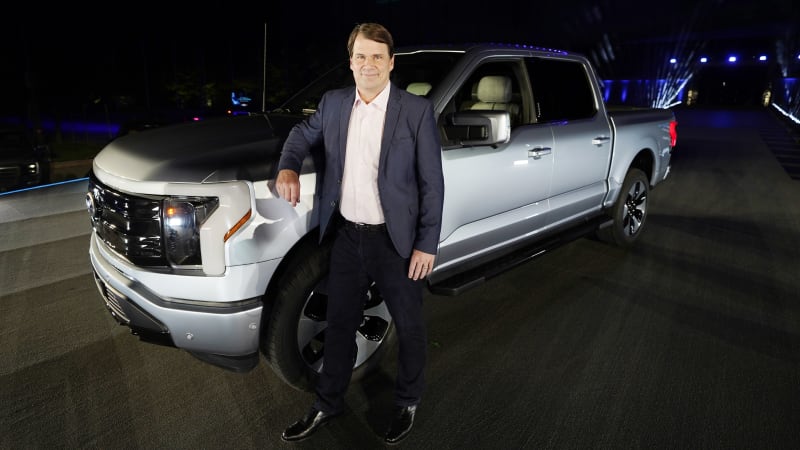On May 19, Ford unveiled the fully-electric F-150 Lightning pickup truck and amassed 45,000 reservations within two days. A few days later on May 24, a commercial variant was announced as the F-150 Lightning Pro. With slightly less interior content geared toward work truck buyers, it’s expected to be delivered next year.
A key selling point for the 2022 Ford F-150 Lightning Pro is a lower cost of ownership compared to similarly equipped gas-powered models. In the press release, Ford says the truck “targets reducing scheduled maintenance costs by 40% over eight years and 100,000 miles – with potential for further operational cost savings through lower fuel costs.”
Ford’s commitment to lower operating costs with EV implementation isn’t new to the industry. With substantially fewer moving parts to fail and much less in the way of service requirements, all electric vehicles are in a similar category. A report from a Tesla Model 3 owner named Kazi Imam on Electrek.co indicates that total maintenance over 100,000 miles accumulated to $1,741, and electricity to charge the car over the same distance tallied to just shy of $3,000.
Good news for owners, hard reality for service departments
Lower cost of ownership is great for car buyers, especially as new models are coming much closer to price parity with gas-powered cars. It now makes it more affordable in many cases to own an EV over the four- to six-year span most new car owners keep their vehicles, although the initial purchase price remains higher. As new car prices on EVs ease lower and the average selling price for new vehicles holds above $40,000, it’s plausible that EV adoption will take off in the next two to three years.
However, service departments will begin to see the trickle-down effect of lower operational costs from higher numbers of EVs on the road. Since gas-powered cars will dominate the roads for years, it may not register on the books for some time. The slow transition to electric-powered cars, trucks, and SUVs will undoubtedly catch up with service departments who need to be ready for it.
Where service needs to be headed
For Imam, his Tesla Model 3 required only basic work over the 100,000 miles he registered on the odometer. Tires accounted for the majority of the cost while a wheel alignment, brake fluid flush, cabin air filter, and wiper blade replacement made up the rest. A comparable vehicle like the Toyota Camry has scheduled maintenance costs of around $2,127 for the first 100,000 miles not including tires, brakes, and mechanical repairs. All told, it’s likely between $4,000 and $5,000 in operational costs for the Camry.
That’s revenue the dealership won’t see on EVs through the service department. A pivot away from dollars per work order and six-month maintenance visits and toward after-sales loyalty appears to be mandatory.
Fewer systems need servicing, and dealerships will need to capture a higher percentage of their customers’ service work than the current rate – around 30% after three years – to keep the service department as the dealership’s profit center.
The type of work service departments can expect will be tires, brakes, suspension and steering, and fit-and-finish issues. Competitive pricing is one way to retain customers but can be detrimental to gross profit and the resultant net. Two strategies can be beneficial to keep customers coming back to the dealership for their service work, infrequent as it may be.
Prepaid maintenance
Proven to keep customers coming back to the dealership for all their service needs, prepaid maintenance packages should be in the crosshairs for F&I managers. Albeit at a significantly lower cost than gas-powered models, these packages should be sold as protecting against the inflationary costs of parts and labor. If packages are developed in-house, include options for tires and brakes that will prevent customers from even looking at other shops to get their service work performed. Dealers cannot afford to lose customers to competitors.
Intelligent marketing
And of course, keeping in continuous communication with the customer using relevant content will be key. There will be fewer touch points with EV owners so make the most of communications including new model releases, how-to and explainer video content, technology and brand highlights, as well as enticing them to upgrade to the latest and greatest as it arrives.
By staying in front of their eyes, dealerships can continue to develop loyalty so long as the messaging isn’t viewed as spam.
Short term, it might not seem like EVs will affect the service department but the long-term view is a little different. Develop strategies unique to EV owners that will prevent a slow decline in traffic and revenue through the shop.
Did you enjoy this article from Jason Unrau? Read other articles on CBT News here. Please share your thoughts, comments, or questions regarding this topic by submitting a letter to the editor here, or connect with us at newsroom@cbtnews.com.
Be sure to follow us on Facebook and Twitter to stay up to date or catch-up on all of our podcasts on demand.
While you’re here, don’t forget to subscribe to our email newsletter for all the latest auto industry news from CBT News.









